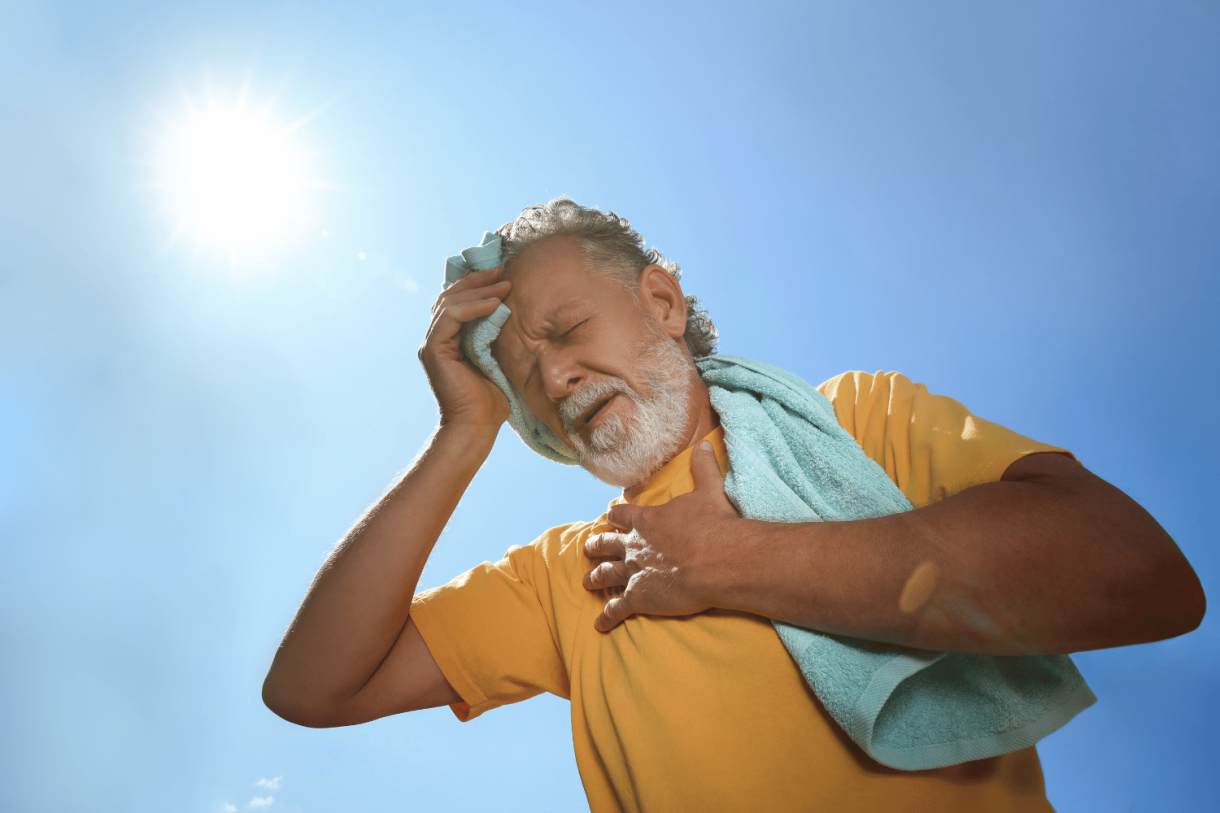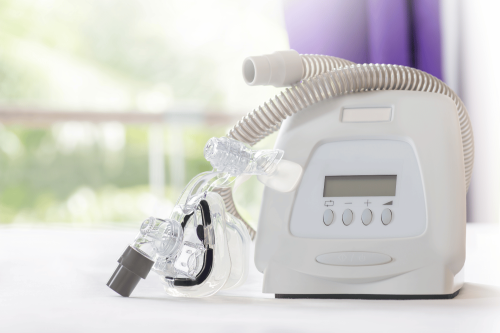
Did you know that prolonged exposure to extreme heat can lead to a life-threatening condition called heatstroke? Heatstroke occurs when the body overheats and can no longer regulate its temperature, often resulting in organ damage, brain injury, or even death.
Common causes include high temperatures, strenuous physical activity, dehydration, or wearing heavy clothing in hot weather. Recognizing the warning signs early—such as confusion, high body temperature, and rapid heartbeat—can make all the difference in preventing serious complications.
In this blog, we’ll explore what heatstroke is, its causes, symptoms, and the life-saving measures you can take to protect yourself and others. Understanding this condition is essential, especially during hot weather or heatwaves.
What Is Heatstroke?
Heatstroke is a severe form of heat-related illness that occurs when the body’s core temperature rises above 104°F (40°C). This condition disrupts the body’s ability to cool itself, leading to serious health risks. Heatstroke can cause damage to vital organs, including the brain, heart, and kidneys. Without immediate medical attention, it can result in life-threatening complications. Recognizing the symptoms and acting quickly is crucial to prevent long-term harm.Causes of Heatstroke
After understanding what heatstroke is, you should know what causes this condition. Heatstroke can be exertional (caused by physical activity) or non-exertional (classic), and the signs can differ based on the type. Several factors can lead to the body overheating, such as:
- Prolonged exposure to high temperatures
- Strenuous physical activity in hot weather
- Dehydration
- Wearing heavy or inappropriate clothing
- Certain medications
- Underlying health conditions
- Sudden temperature changes
Recognizing the Symptoms of Heatstroke
The symptoms of heatstroke can appear suddenly and become severe quickly if not treated. It is vital to recognize these signs early to avoid life-threatening complications. Here are the common symptoms to watch for.
High Body Temperature
A core body temperature of 104°F (40°C) or higher is a primary sign of heatstroke. This extreme temperature can lead to:
- Damage to the brain and other vital organs
- A feeling of being extremely hot
- A medical emergency requiring immediate cooling
Changes in Skin Condition
The skin's appearance is a classic indicator of heatstroke, which may present as:
- Hot, red, and dry skin because the body has lost its ability to sweat
- In exertional heatstroke, the skin may be moist from heavy sweating
Altered Mental State
A significant rise in body temperature directly affects the brain, leading to a variety of neurological symptoms such as:
- Confusion or disorientation
- Agitation or irritability
- Slurred speech or difficulty communicating
- Seizures or loss of consciousness
- Hallucinations
Rapid Heart Rate and Breathing
The cardiovascular system works overtime to try and cool the body, which can result in:
- A strong, racing pulse (tachycardia)
- Rapid, shallow breathing as the body struggles
Dizziness and Fainting
Reduced blood flow to the brain due to overheating can often cause feelings of dizziness or fainting, including symptoms like:
- Feeling lightheaded or unsteady
- A spinning sensation (vertigo)
- Sudden loss of consciousness (syncope)
Throbbing Headache
A severe, throbbing headache is a common complaint among individuals with heatstroke. The pain might feel:
- Intense and pulsating
- Worse with continued heat exposure
Nausea and Vomiting
Heatstroke can disrupt the digestive system, leading to significant gastrointestinal distress with symptoms like:
- Feeling sick to your stomach
- Vomiting or retching
- Lack of appetite
Stages of Heat-Related Illness
Heat-related illnesses progress through several stages, with each stage becoming more severe. It's important to recognize the signs early to prevent progression to a life-threatening condition.
Stage 1 – Heat Cramps
This is the mildest form of heat illness.
- Characterized by painful muscle spasms, usually in the legs, arms, or abdomen.
- Caused by loss of salt and water from heavy sweating.
- Other symptoms may include fatigue and thirst.
Stage 2 – Heat Exhaustion
This stage is more serious and requires prompt attention.
- Symptoms include heavy sweating, pale skin, weakness, and dizziness.
- Nausea, vomiting, and a faint pulse are common.
- The body temperature may be slightly elevated but is usually below 104°F (40°C).
Stage 3 – Heatstroke
This is a medical emergency and the most severe stage.
- Body temperature rises to 104°F (40°C) or higher.
- The skin may be hot and dry, or profusely sweaty.
- Symptoms include confusion, loss of consciousness, and seizures.
- Immediate medical intervention is required to prevent permanent organ damage or death.
Heatstroke in Vulnerable Populations
Certain groups are more susceptible to heatstroke and may exhibit different or more subtle signs.
Children
Children are less able to regulate their body temperature and rely on others to keep them safe.
- High body temperature, but with little or no sweating
- Hot, flushed, or red skin
- Irritability, lethargy, or listlessness
- Vomiting and confusion
Older Adults
The body's ability to cope with heat diminishes with age, and symptoms can be less noticeable.
- Confusion or changes in mental state may be the primary initial sign
- Fainting or dizziness
- Hot, dry skin without sweating
- Worsening of existing chronic health conditions, such as heart or kidney disease
Athletes and Outdoor Workers
These individuals are at high risk due to strenuous physical exertion in hot environments.
- Excessive sweating that may suddenly stop (a critical sign)
- Nausea, headache, and extreme weakness
- High body temperature despite being physically fit
- Muscle cramps and disorientation
Recognizing Severe Heatstroke
Severe heatstroke is a life-threatening medical emergency that demands immediate intervention. Signs of severe heatstroke include:
- Extremely high body temperature, often above 104°F (40°C)
- Loss of consciousness or seizures
- Rapid, shallow breathing and a racing heart rate
- Signs of organ failure or shock
Diagnosing Heatstroke
If you suspect heatstroke, it is critical to get medical help right away. Healthcare providers diagnose heatstroke and determine its severity using several methods:
- Body Temperature Measurement: A rectal thermometer is used to get the most accurate core body temperature reading, which is a key indicator of heatstroke.
- Blood Tests: These tests are performed to detect electrolyte imbalances and assess whether vital organs, such as the kidneys or liver, have been damaged by heat.
- Urinalysis: A urine test can show how well the kidneys are functioning and reveal the level of dehydration. The color of the urine often indicates hydration status.
- Imaging Tests: In severe cases, a CT or MRI of the head may be ordered to evaluate for brain swelling or damage from extreme body temperature.
Treatment of Heatstroke
Heatstroke is a life-threatening condition that requires immediate medical intervention. The primary goal of treatment is to rapidly lower the body’s temperature and address any complications to prevent long-term damage or fatal outcomes. Here are the key steps in managing heatstroke:
1. Rapid Cooling Methods
The first and most critical step in treating heatstroke is to lower the body’s core temperature as quickly as possible. Standard cooling methods include:
- Cold Water Immersion: Immersing the patient in a tub of cold or ice water is one of the most effective ways to rapidly reduce body temperature.
- Ice Packs: Applying ice packs to areas with high blood flow, such as the neck, armpits, groin, and back, can help cool the body.
- Evaporative Cooling: Spraying the patient with cool water while using fans to enhance evaporation can also be effective.
- Cooling Blankets: In medical settings, specialized cooling blankets may be used to regulate body temperature.
2. Hydration and Electrolyte Restoration
Heatstroke often leads to severe dehydration and electrolyte imbalances. Administering intravenous (IV) fluids is essential to:
- Rehydrate the body.
- Restore electrolyte levels, which are critical for proper organ function. Oral rehydration may be used in milder cases, but IV fluids are preferred for severe heatstroke to ensure rapid and controlled hydration.
3. Medications for Symptom Management
In some cases, medications may be required to manage specific symptoms or complications, such as:
- Seizures: Anticonvulsant medications may be administered if the patient experiences seizures due to heatstroke.
- Shivering: Muscle relaxants or sedatives may be used to control shivering, which can interfere with cooling efforts.
4. Monitoring and Supportive Care
Patients with heatstroke require close monitoring in a medical facility to ensure a full recovery and to address any complications. This includes:
- Vital Signs Monitoring: Continuous tracking of heart rate, blood pressure, and body temperature.
- Organ Function Assessment: Monitoring kidney, liver, and brain function to detect and manage potential damage caused by overheating.
- Respiratory Support: In severe cases, oxygen therapy or mechanical ventilation may be necessary if breathing is compromised.

Treatment of Heatstroke
How to Respond if You Suspect Heatstroke
Heatstroke is a life-threatening emergency that requires immediate action. If you suspect someone is experiencing heatstroke, taking the right steps quickly can prevent serious complications and save their life. Here’s what to do:
1. Move to a Cooler Area
The priority is to reduce the person’s exposure to heat:
- Move them to a shaded, cool, or air-conditioned space.
- If indoors, use fans or open windows to improve ventilation.
- Please encourage them to lie down and rest in a comfortable position.
2. Cool the Body Immediately
Rapidly lowering the person’s body temperature is critical:
- Cold Water or Ice Packs: Apply cold water to their skin or place ice packs on high-blood-flow areas such as the neck, armpits, and groin.
- Wet Towels or Sheets: Drape damp towels or sheets over their body to help them cool down.
- Spraying with Water: If possible, spray them with cool water and use fans to enhance evaporation. Avoid using ice-cold water if it causes shivering, as this can increase body heat.
3. Hydrate (If Conscious)
If the person is awake and alert:
- Offer small sips of cool water or an electrolyte drink to help rehydrate.
- Avoid sugary, caffeinated, or alcoholic beverages, as these can worsen dehydration. If the person is unconscious or unable to drink, do not attempt to give them fluids orally.
4. Call Emergency Services
Heatstroke is a medical emergency that requires professional treatment. Call 911 or your local emergency number immediately. Be prepared to provide the following information:
- The person’s symptoms.
- Their approximate age and condition.
- The steps you’ve already taken to cool them down.
5. Monitor Symptoms and Provide Support
Stay with the person until emergency responders arrive:
- Watch for changes in their condition, such as confusion, seizures, or loss of consciousness.
- If they stop breathing or their heart stops, begin CPR if you are trained to do so.
- Keep them as calm and comfortable as possible while waiting for help.
Final Thoughts
Heatstroke is a serious and potentially fatal condition, but with the proper knowledge and quick action, it can be prevented and treated effectively. Recognizing the warning signs, such as high body temperature, confusion, and dizziness, is crucial for early intervention.
To stay safe, avoid prolonged exposure to extreme heat, stay hydrated, and take breaks in cool environments. If you suspect heatstroke, act immediately by cooling the person down and seeking emergency medical help.
By staying informed and prepared, you can protect yourself and others from the dangers of heatstroke. Remember, quick action can save lives when it comes to this life-threatening condition.








 Login with Google
Login with Google Login with Facebook
Login with Facebook